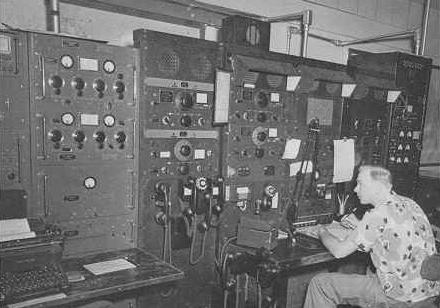
1931
Albuquerque Flight Service Up And Running
April 1, 1931, Albuquerque, New Mexico. Albuquerque Flight Service Station (FSS) will provide air traffic advisories, pilot briefings, en route communications and VFR search and rescue services, assist lost aircraft and aircraft in emergency situations, provide Notices to Airmen, broadcast aviation weather. In addition, the Flight Service Station will provide En Route Flight Advisory.

FEBRUARY 25--A new pilot training syllabus was issued which added a course in Advanced Seaplane Training and returned the courses in Bombing and Torpedo, and Observation and Gunnery, dropped in November 1929, thereby expanding the regular flight course to 258.75 hours and, for those also taking Advanced Combat, to 282.75 hours. The ground school course was also expanded in some areas and with the inclusion of a short course in photography, totalled 386.5 hours.
Navy Launches 5 Aircraft For Earthquake Relief
MARCH 31--When a disastrous earthquake shook Nicaragua and destroyed most of the city of Managua, Lexington was ordered from Guantanamo Bay, Cuba, to assist other Navy and Marine units in relief operations. Early the next afternoon, she inaugurated carrier aircraft relief operations in the U.S. Navy, by launching five planes carrying medical personnel, supplies and provisions to the stricken city.
Navy's First Retractable Landing Gear Aircraft
APRIL 2--A contract for the XFF-1 two-seat fighter, the first naval aircraft to incorporate retractable landing gear for the purpose of improving aerodynamic cleanness and thereby increasing performance, was issued to Grumman.
Martin Company Receives Aircraft Contract
APRIL 9--A contract was issued to the Glenn L. Martin Company for 12 BM-1 dive bombers. This aircraft, which was a further development of the XT5M-1, was the first dive bomber capable of attacking with a heavy (1,000 pound) bomb to be procured in sufficient quantity to equip a squadron.
Navy Receives New Aircraft Markings
JUNE 1--New specifications for aircraft marking were issued which directed use of 20-inch-wide colored bands around the fuselage of section leader planes, assigning royal red, white, true blue, black, willow green and lemon yellow for sections 1 through 6 respectively. The same order permitted use of distinguishing colors on the empennage whenever two or more squadrons of the same class operated together.